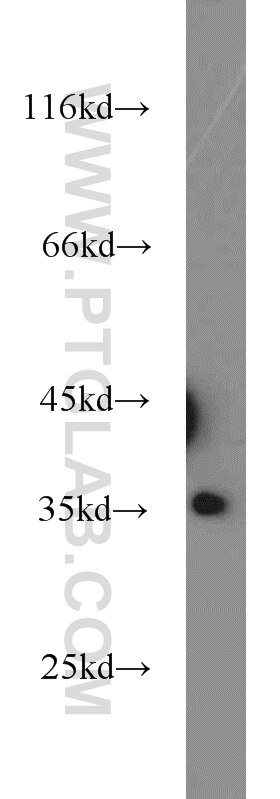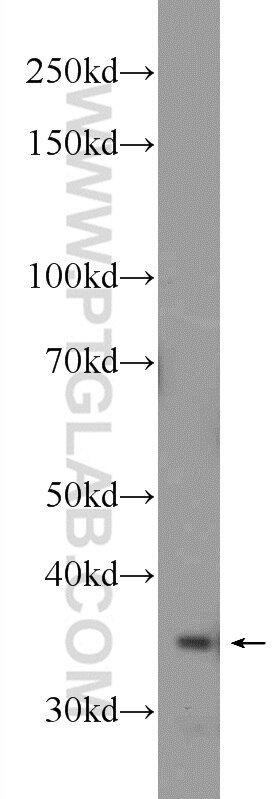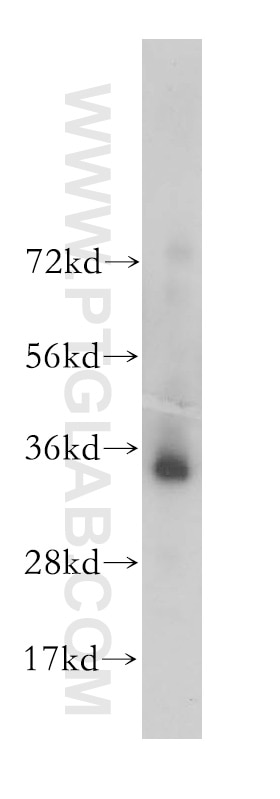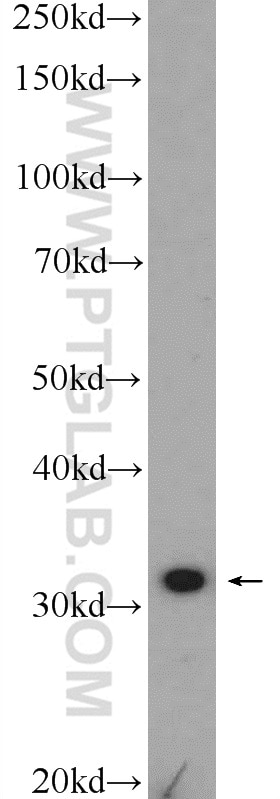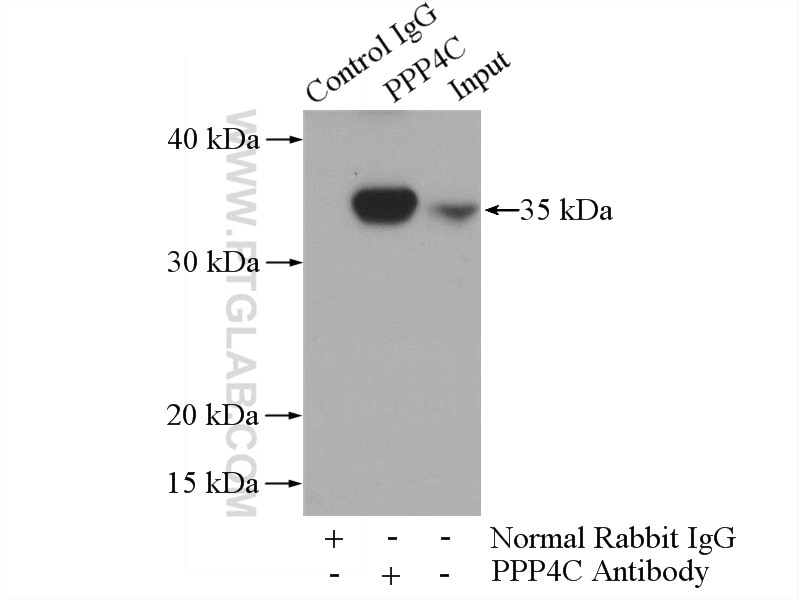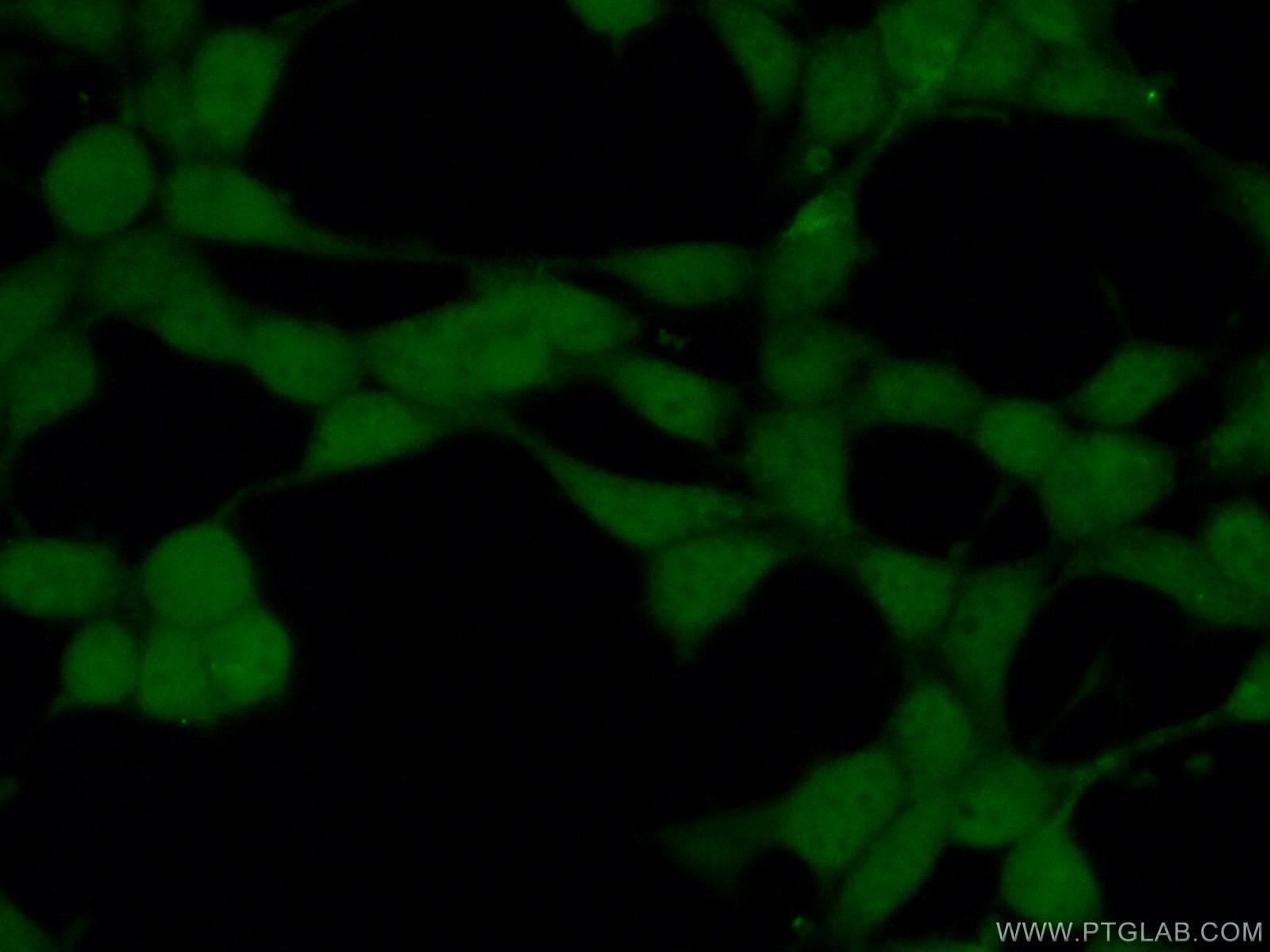PPP4C Polyklonaler Antikörper
PPP4C Polyklonal Antikörper für WB, IF/ICC, IP, ELISA
Wirt / Isotyp
Kaninchen / IgG
Getestete Reaktivität
human, Maus, Ratte
Anwendung
WB, IF/ICC, IP, ELISA
Konjugation
Unkonjugiert
Kat-Nr. : 10262-1-AP
Synonyme
Galerie der Validierungsdaten
Geprüfte Anwendungen
| Erfolgreiche Detektion in WB | HEK-293-Zellen, Jurkat-Zellen, Mausnierengewebe |
| Erfolgreiche IP | Mausnierengewebe |
| Erfolgreiche Detektion in IF/ICC | HEK-293-Zellen |
Empfohlene Verdünnung
| Anwendung | Verdünnung |
|---|---|
| Western Blot (WB) | WB : 1:500-1:2000 |
| Immunpräzipitation (IP) | IP : 0.5-4.0 ug for 1.0-3.0 mg of total protein lysate |
| Immunfluoreszenz (IF)/ICC | IF/ICC : 1:50-1:500 |
| It is recommended that this reagent should be titrated in each testing system to obtain optimal results. | |
| Sample-dependent, check data in validation data gallery | |
Veröffentlichte Anwendungen
| KD/KO | See 1 publications below |
| WB | See 3 publications below |
| IF | See 1 publications below |
| IP | See 3 publications below |
Produktinformation
10262-1-AP bindet in WB, IF/ICC, IP, ELISA PPP4C und zeigt Reaktivität mit human, Maus, Ratten
| Getestete Reaktivität | human, Maus, Ratte |
| In Publikationen genannte Reaktivität | human, Maus |
| Wirt / Isotyp | Kaninchen / IgG |
| Klonalität | Polyklonal |
| Typ | Antikörper |
| Immunogen | PPP4C fusion protein Ag0356 |
| Vollständiger Name | protein phosphatase 4 (formerly X), catalytic subunit |
| Berechnetes Molekulargewicht | 35 kDa |
| Beobachtetes Molekulargewicht | 35 kDa |
| GenBank-Zugangsnummer | BC001416 |
| Gene symbol | PPP4C |
| Gene ID (NCBI) | 5531 |
| Konjugation | Unkonjugiert |
| Form | Liquid |
| Reinigungsmethode | Antigen-Affinitätsreinigung |
| Lagerungspuffer | PBS mit 0.02% Natriumazid und 50% Glycerin pH 7.3. |
| Lagerungsbedingungen | Bei -20°C lagern. Nach dem Versand ein Jahr lang stabil Aliquotieren ist bei -20oC Lagerung nicht notwendig. 20ul Größen enthalten 0,1% BSA. |
Hintergrundinformationen
The phosphorylation and dephosphorylation of proteins on serine and threonine residues is an essential means of regulating a broad range of cellular functions. The serine/threonine protein phosphatases (PP) are intimately involved in this process. Serine/threonine protein phosphatase X (PPX; also called protein phosphatase 4 (PP4)) are specifically associated with nuclear factor-kappa B (NF-kappa B) p50, c-Rel, and RelA, which are pleiotropic transcription factors that play central roles in the immune and inflammatory responses, as well as apoptosis. Overexpression of PPX stimulated the DNA-binding activity of c-Rel and activated NF-kappa B-mediated transcription. Although the mechanism by which PPX activates Rel/NF-kappa B-mediated transcription is unclear, PPX appeared to act on Rel/NF-kappa B proteins directly through augmentation of c-Rel activity. It is also possible that PPX may dephosphorylate and subsequently activate other c-Rel-associated transcription factors or other kinases regulating I kappaB (e.g. I kappa B kinases or MEKK1). These data suggest that PPX is an activator, but not an inhibitor, of c-Rel/NF-kappa B, which is in contrast to other protein phosphatases.
Protokolle
| Produktspezifische Protokolle | |
|---|---|
| WB protocol for PPP4C antibody 10262-1-AP | Protokoll herunterladen |
| IF protocol for PPP4C antibody 10262-1-AP | Protokoll herunterladen |
| IP protocol for PPP4C antibody 10262-1-AP | Protokoll herunterladen |
| Standard-Protokolle | |
|---|---|
| Klicken Sie hier, um unsere Standardprotokolle anzuzeigen |
Publikationen
| Species | Application | Title |
|---|---|---|
Genes Dev Protein phosphatase 4 controls circadian clock dynamics by modulating CLOCK/BMAL1 activity. | ||
Cell Rep Kin17 regulates proper cortical localization of Miranda in Drosophila neuroblasts by regulating Flfl expression
| ||
Front Cardiovasc Med Macrophages-Related Genes Biomarkers in the Deterioration of Atherosclerosis. | ||
FEBS Lett Protein phosphatase 4 negatively regulates LPS cascade by inhibiting ubiquitination of TRAF6. | ||
Cell Death Differ AMBRA1 promotes intestinal inflammation by antagonizing PP4R1/PP4c mediated IKK dephosphorylation in an autophagy-independent manner |
